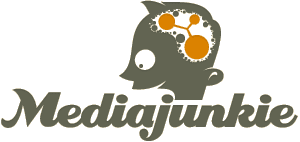Scott writes:
I argued that it’s silly to talk about blogs “killing” print – that we keep getting stuck in a loop every time a new news distribution technology comes along, asking, will this “kill” its predecessor? Radio didn’t kill print, TV didn’t kill radio, the Net didn’t kill TV, and blogs won’t kill anything. Each new medium forces its predecessors to rethink what they do, and sometimes to revamp their business structures. Blogs are a fantastic way for individuals to enter the global conversation on the Net, to comment on the news and sometimes to break some news themselves. They don’t have to become Big Business to be important.
He also noted the sparse attendance. Some of it is due to the still persistent IT/tech downturn, for sure, but I think there’s also something interesting going on in that RSS is subverting some of the more rarified syndication formats (some of which were also addressed at the conference) just as weblogs – or at least lessons learned from the sucess of the weblog software interface – are a disruptive technology to the CMS giants that still lsponsor major sections of Seybold.
As a CMS consultant, I still know I can charge much more and it will take much longer to get a Vignette StoryServer, or Interwoven Teamsite, or Documentum implemented. For all but the most robust Fortune 500 type organizations, full featured CMSes like those are overkill. Expensive overkill.
With open source alternatives in the middle price range and high-end weblog tool (such as, perhaps, the forthcoming MovableType Pro) at a significantly lower price point, some subset of content strategy issues (such as keeping fresh content appearing on a site, search-engine optimization, and syndication decisions) can be addressed with weblog software, whether off-the-rack or home grown.
(Anyone already invested in a heavy-dute CMS can add weblogs virtually overnight. The trick is streamlining the web-form based interface, making sure the data model contains the right elements, inserting weblog hooks into existing page templates, and outputting permalinked archive pages and RSS.)
Robust eCMS systems and the associated professional services consulting isn’t going away (I got leads on several potentially interesting projectgs while at the conference), but for a growing segment of the web-development client base, weblog-type solutions are more than adequate.

Comments
One response to “Scott Rosenberg blogs Seybold”
What we’re watching is a long, slow convergence, IMO. Scott’s right, folks have always said print was dead and were wrong. But eventually a technology will appear that will be both print AND digital, allowing users to gather both corporately- and privately-produced content of choice.
Imagine a flexible display that feels and acts like paper, with a changing display and upload capability; receive new content via wireless subscription. It’s the next newspaper, only highly portable, highly flexible, delivered not to your doorstep but to your hand. Roll it up, swat at flies, unroll it, get your feed, read it, fold and stuff it in pocket of your jacket.
I’ve seen something like it in development. Yeah, that’s what we’re waiting for. The rest of this stuff is just the evolutionary process leading up to it.